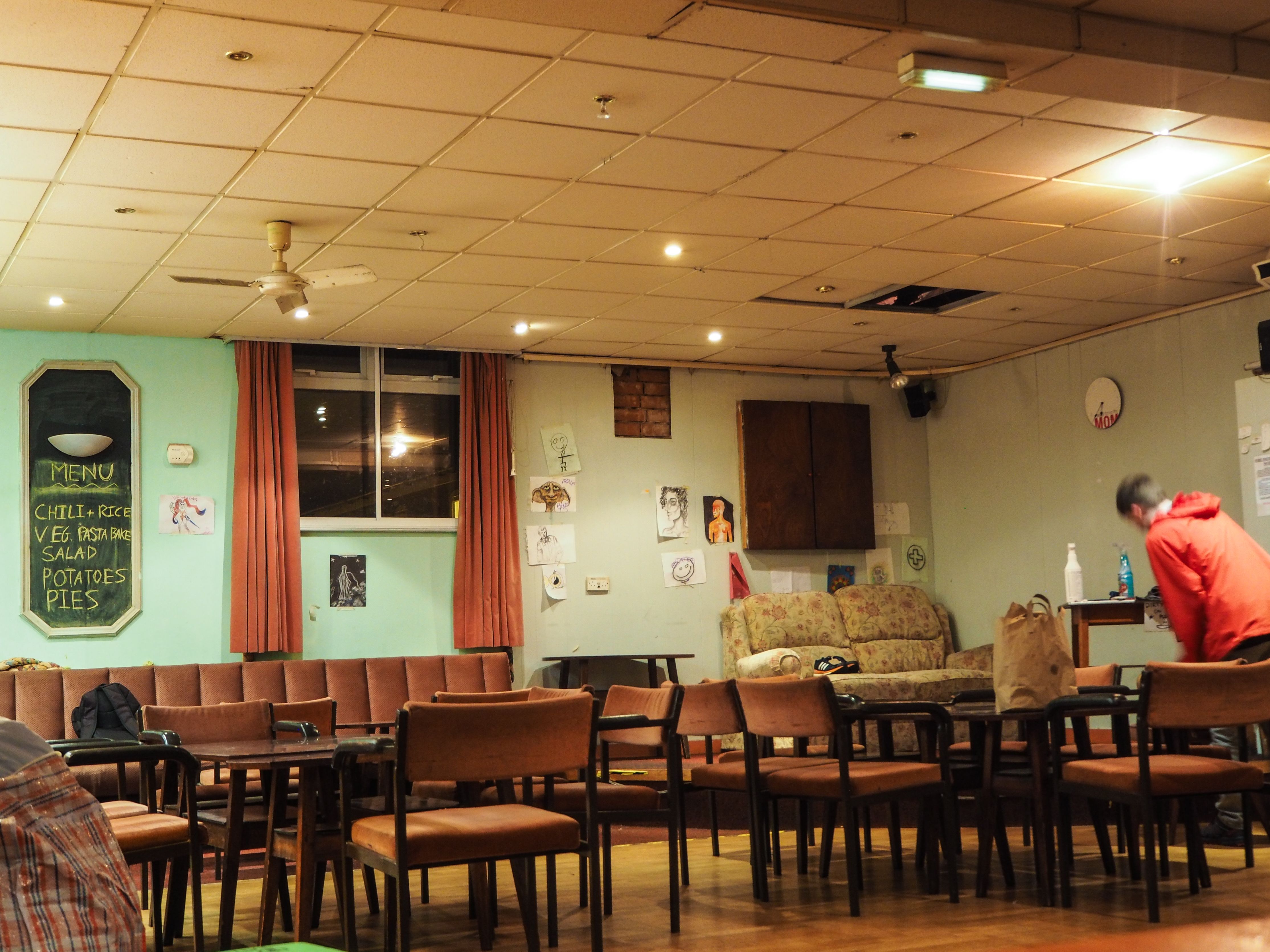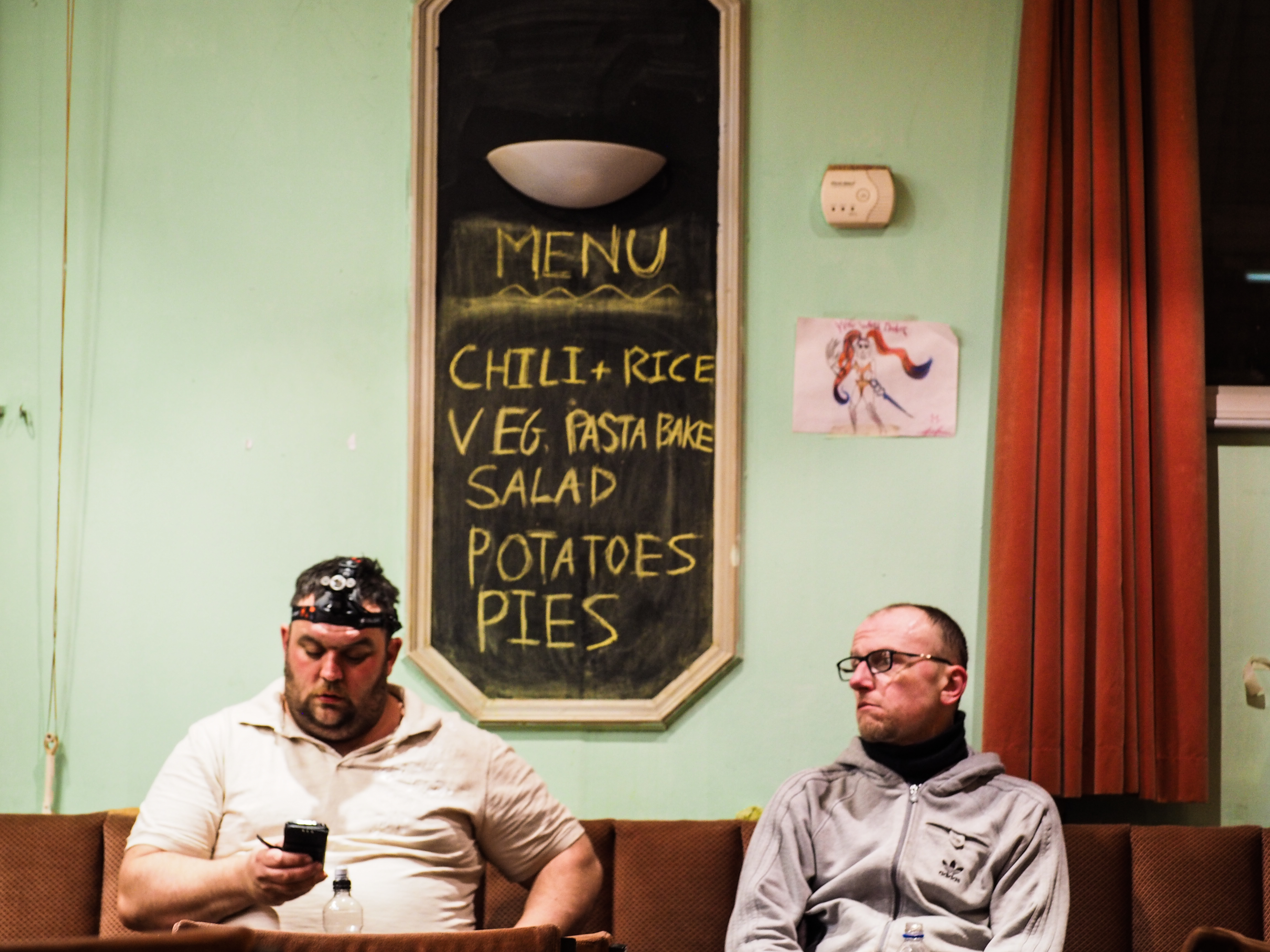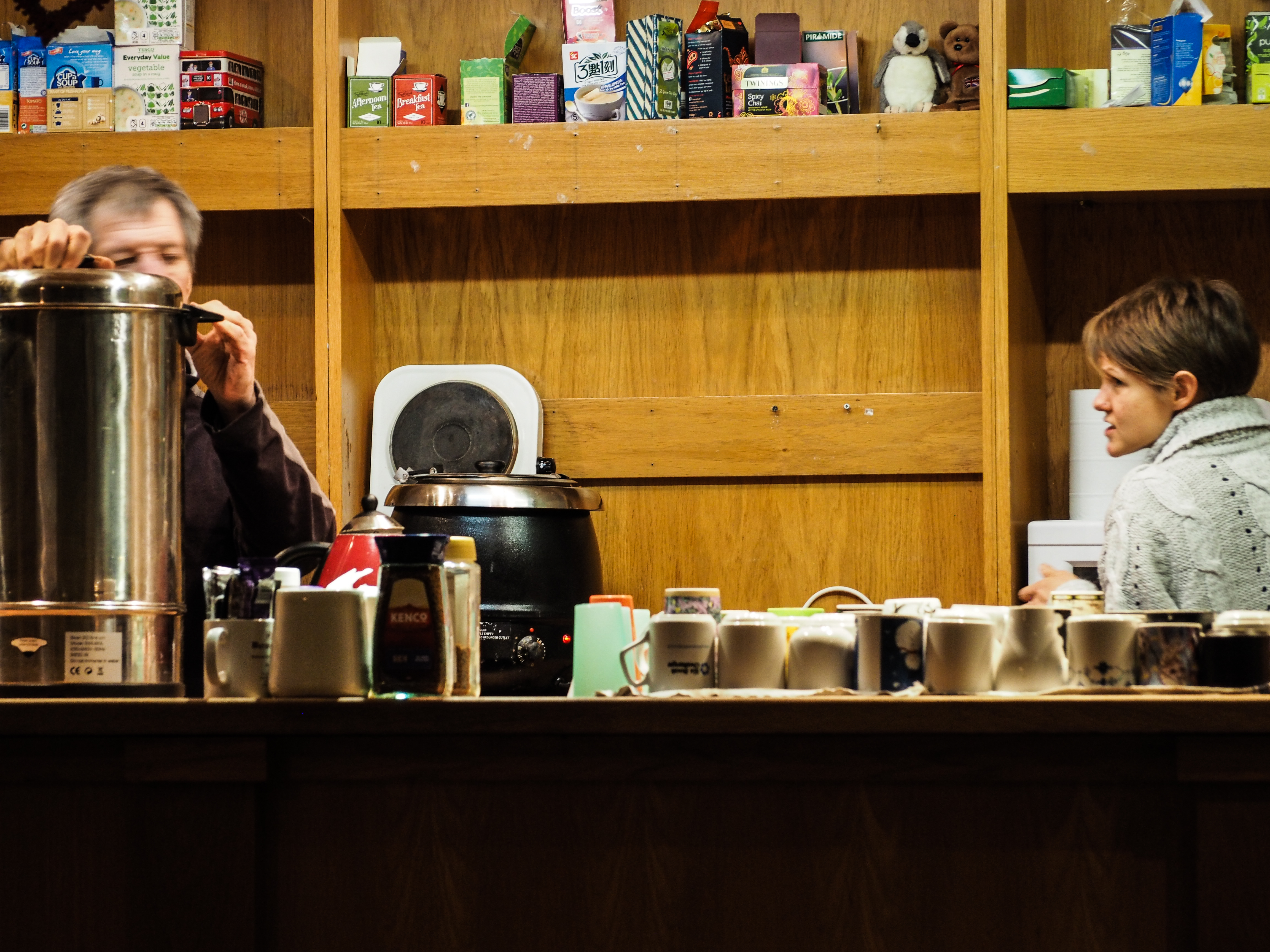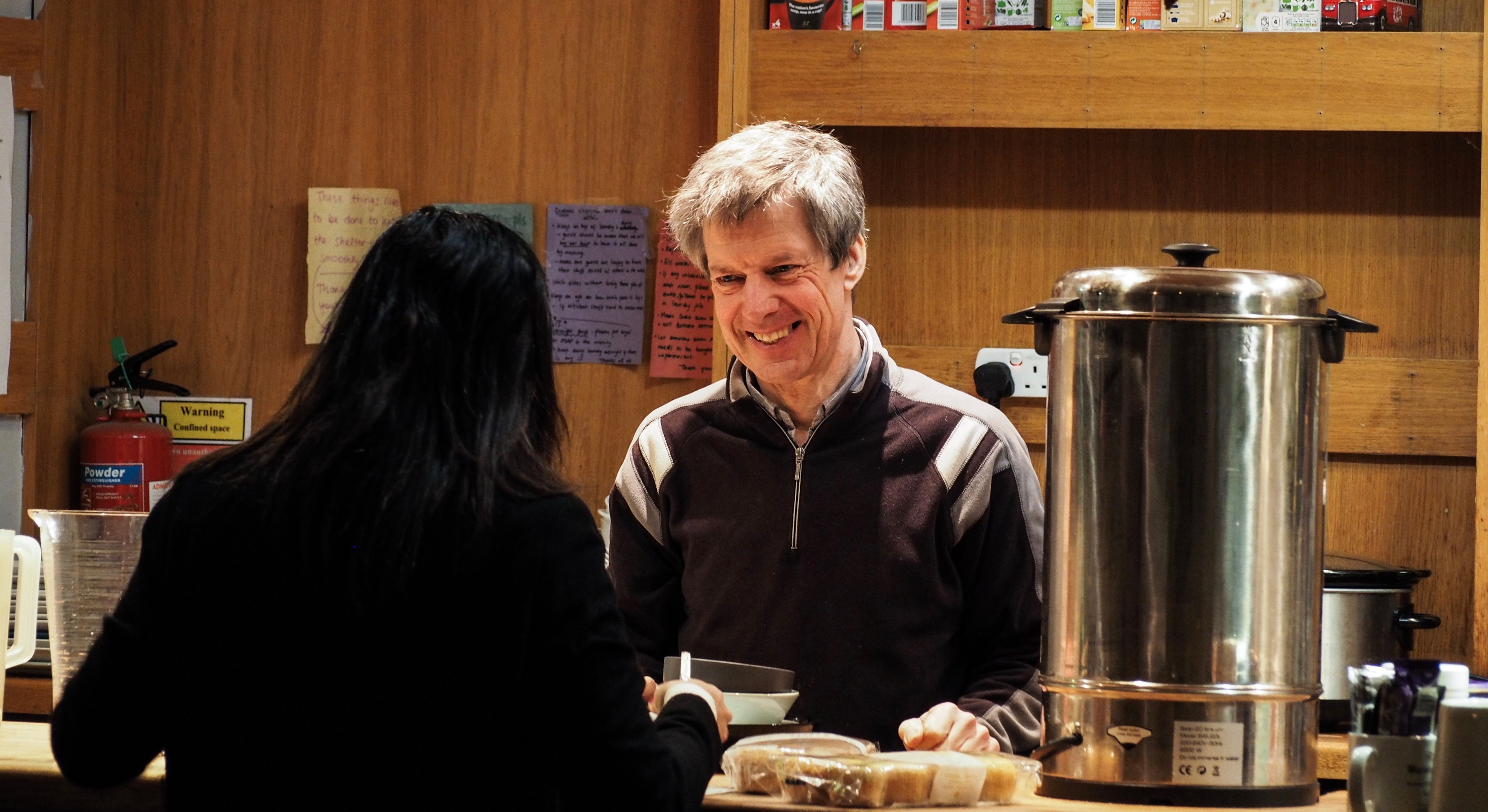Leamington Winter Support: from student project to heart of community
Chris* is notably anxious. He has been given an eviction notice after his flat got broken into, and the landlord deemed him unable to take proper care of it. He has one month to find a new place.
For him, the situation is particularly distressing, as he has known what it is like to live on the streets. He explains to me how he had no fixed abode for 16 years. Touchingly, he says the hardest thing about it is not being able to stay in touch with people: “I can’t know if there’s important information sent to me—I can’t post letters, find letters….”. It’s this sense of disconnect from the world that plagues many homeless people, and that makes a place like the Leamington Winter Support (LWS) Night Shelter so important.
In three months LWS was all set up and ready to go
Chris has been coming to the shelter for about eight months. “I get along with most of the people here,” he tells me. “I can’t say it’s a community as such, but because we’re homeless, we’ve got something in common.”
The shelter was founded in January 2016 by Susan Rutherford and Vishal Chauhan, both then medicine students at Warwick. The students realised the homeless support in place in Leamington at the time only covered a few nights of the week. Winter was coming and they were worried about the amount of people that would have to endure the harsh conditions on the streets. They approached members of the local council, estate agents, and local health forums to discuss the establishment of a new shelter. The response was reassuring. Local estate agent Tara and Co. helped them get in touch with landlords who owned empty spaces in the area, and they eventually found one they could use, rent-free. In three months LWS was all set up and ready to go.
I am invested in each and every one of them
LWS was originally envisioned as a temporary project, offering relief for that winter only. However, it was received so well by the community that it remained as a year-round shelter and prominent source of homelessness support in the area.
The space consists of two main rooms: a front room, which resembles the interior of a pub, and a back room, where mattresses and duvets are kept. Resources are basic—as Josh, an established volunteer told me, “had we known we would have been here for two years, we would have put stuff like showers in.” Despite this, the place has a homely feel to it. Most of the guests sit in groups—talking, eating, and laughing. And there is little divide between them and the volunteers, who exchange inside jokes with each other like old friends.

Image: Max Connelly-Webster
The relationship between the volunteers and the guests at the shelter is indeed heart-warming. Since setting up LWS, Susan has become a doctor and works at a hospital in Derby. Nonetheless, she continues to visit regularly, admitting to me that she never wants to stop: “I am invested in each and every one of them. It frustrates me when I can’t be here”.
Susan’s care for the guests is evident. Knowing and greeting each one by their name, she recounts some of their stories to me. This is impressive considering the sheer amount of visitors they now have. LWS hosts about 30 to 40 individuals each evening, with as many as 15 of those choosing to stay overnight. On days where the temperature drops significantly, the shelter can host over 50 people.
In 2017, the Warwick District Council received a total of 519 homelessness applications
Despite being a small town, Leamington has a substantial homeless population. In 2017, the Warwick District Council received a total of 519 homelessness applications. Since 2010, there has been a 132% rise in the number of applications, a far higher increase than the national average. Warwick District has the highest rate of homelessness in the West Midlands. As areas in the district like Stratford and Rugby have zero provisions for the homelessness, Leamington and its shelters also get a flood of people from these neighbouring regions, especially during the cold winter months.
And many don’t just come to LWS for the warmth, bedding, and food; they rely on the shelter for emotional sustenance too. “I come here mostly for the companionship”, Andrew, a regular LWS guest tells me. Andrew is originally from Zimbabwe, where he owned a farm. He tells me he moved to the UK 14 years ago, for political reasons.
You’re safer if you’ve got a tent
He held a few odd jobs but nothing more permanent. “I am actually looking for work at the moment”, he said, in a tone that betrayed the hope I could get the word out for him.
Andrew currently lives with a friend. “He gives me a room and I help him build in return.” Of course, this arrangement, which entails unpaid labour and no contract, is far from ideal. Andrew is part of the thousands of ‘invisible homeless’ in the UK, sofa-surfers or squatters who have no permanent accommodation but are not visible either on official figures or on the streets.
Nonetheless, Andrew is no stranger to sleeping rough. “It’s hard to find a place, especially if you don’t have any family connections”, he complains. Andrew describes how he would stay in a tent, in the middle of the “forest”. According to him, sleeping in forests or parks is better, to avoid harassment. The tent was also for protection: “You’re safer if you’ve got a tent”, he says in a matter-of-fact tone.
You’ve got university here so you also gotta have somewhere to go
I ask him if he feels resentment towards students, for whom ‘finding a place’ is so easy, with new accommodation regularly in the works. “It’s okay,” he says. “You’ve got university here so you also gotta have somewhere to stay.”
His criticism is levelled against the council instead: “I think the council should build more affordable housing.”

Image: Max Connelly-Webster
Indeed, according to research by Halifax, house prices in Leamington have risen by 273% in the last 20 years. The town is one of the nine areas outside southern England that have a higher price per square metre than the national average.
For locals, this problem is exacerbated by the fact that the housing market in Leamington can be largely directed towards students. The Warwick District is in the top 10% for student households nationally. The continually rising student population had led to an increase in the development of Houses in Multiple Occupancy (HMOs) in the area, of which there are currently 1,352 in Leamington Spa. These are a favourable option for landlords, as they generate far more income than single occupancy households, but they limit the potential for affordable housing and can price out locals.
When I come here, I feel happy
In fact, late last year, plans were submitted to the council that could have seen LWS demolished to make way for student accommodation. In the end, the plans did not go ahead and the shelter managed to keep its space in Priors Club. But as there was no guarantee something similar would not happen again in the future, they decided to look for a new premises. The council has allowed them to use a derelict building in Pakington Place, on the condition that they raise £60,000 to cover its renovation. They are currently fundraising for this.
For many of the guests, the shelter has been a true home, and its loss would be of devastating consequence. One young man I spoke to, Lukas, had been coming to the shelter since its opening night. “When I come here I feel happy,” he told me. “Everyone knows me here because I’ve come a long time, longer than 3 years.”
For Lukas, the LWS Night Shelter was a godsend
Lukas moved to the UK from Eastern Europe three years ago, in search of a better life. But once here, he struggled to find job security: “I was half many jobs—carpentry, building, restaurant, gardening… I don’t remember now everything.” As things got harder, Lukas found himself sleeping on the streets. He was a rough sleeper for seven months. When I asked him what he found the most difficult, he looked as if on the verge of tears: “That question is so difficult to me, I cannot explain.”
For Lukas, the LWS Night Shelter was a godsend. As he looked around at the now-packed room, he smiled, recalling his first few nights at the shelter. “I can’t [couldn’t] sleep well because I’m [was] homeless… I saw Susan, she’s in there. I just come to there and I start to talk with her. And when I start to talk with her I feel happier. And then after I go to sleep and I sleep well.”
In Leamington you feel different
Lukas is no longer a rough sleeper. He now rents a room, with the help of his Job Seeker’s Allowance. But he carries on coming to the shelter for the company, and to practice his English. He tells me he lived in London before Leamington but that it doesn’t compare. “In Leamington you feel different. Locals are amazing.” When I tell him Leamington was selected as the happiest town in the UK, he says he agrees.
He nonetheless has criticisms. On students, he is less positive than locals. He tells me he understands us: we go into town to drink and enjoy ourselves, we don’t want to think about anything else. But as a result, we lack empathy for those lying shivering on the streets. Lukas admits to how, when he sees people out, it “makes me sad. Because I can’t enjoy. I’m homeless.”

Image: Max Connelly-Webster
Lukas’ inability to “enjoy” the life of an average young person can take a significant toll on his mental health. He is open about this, admitting to feeling “depressed” at times. He is no anomaly. In a study carried out among homeless people in 19 areas across England, 80% reported some form of mental health issue, with 45% having been diagnosed.“There’s a high proportion of mental health problems among our guests,” says Jaz, a director at the shelter. Susan tells me that anxiety and depression are the most common, but that there are also cases of schizophrenia and psychosis, both drug-induced and not.
The sheer loneliness that those without a home face is enough to cause significant emotional harm. Many of the guests I spoke to would open up incredibly fast—almost as if in a rush to get everything in before I left. “They are normally dying for someone to listen to them,” Susan tells me.
Due to the chaotic nature of their lives, they struggle to keep to appointments
The guests’ physical health is also poor. Common problems include skin infections, blood clots, and chest infections. Many come to Susan or other volunteers for help, rather than going to their GP. Susan tells me the guests can be reluctant to do this until the situation becomes dire. Due to the chaotic nature of their lives, they struggle to keep to appointments. “The best thing for them are walk-in centre GPs,” she says. Unfortunately, the nearest of these is only in Coventry.
The result is an endless spiral: the guests suffer physical ailment because they’re homeless, but their homelessness also prevents them from seeking professional help. Things can get especially difficult in the winter, as rough sleepers find themselves exposed to bitterly cold weather. One young man I spoke to, who was visiting the shelter for the first time, simply could not believe the warmth: “My ears aren’t cold anymore…” he said, as he held his hands against them.

Image: Max Connelly-Webster
Things have been slightly better since the council changed its Severe Weather Emergency Protocol (SWEP). Originally, the protocol meant that if temperatures dropped to below freezing for three consecutive nights, the council would house rough sleepers in temporary accommodation. The criteria have now been changed in the Warwick District so that SWEP is activated on the first night of freezing temperatures. According to Jaz, Labour councilor Kristie Naimo was crucial in achieving this. “She has been extremely supportive,” he says.
Since 2010, rough sleeping in the Warwick District has almost doubled
There remains, of course, much to be done with regards to homelessness in the area. As Jaz avers, “we shouldn’t have to exist in the first place.” Unfortunately, the need for places like LWS Night Shelter is only increasing. Since 2010, rough sleeping in the Warwick District has almost doubled. Cuts on a national level have seen council spending on housing support slashed by half, and a new round of budget cuts will likely require a further axing of housing services.
In addition to this, as more and more of the affordable housing in the district gets converted into student shared HMOs, or undeveloped land gets used to build student accommodation blocks like the £13million Union building that neighbours the shelter, the options for those like Lukas, Chris and Andrew look increasingly bleak.
There needs to be a recognition that we’re part of the problem and should endeavour to be part of the solution
In a situation that could potentially divide a community, however, the LWS Night Shelter stands as a sign of unity, of students and locals coming together.
According to Susan, about half of the volunteers at the shelter are students. Noel Brooks, a second year Maths undergraduate, is one such student. He has been visiting the shelter regularly since January 2017, and claims the best part of it are the friends he’s made, both volunteers and clients.
When asked about how responsible students are for the rising homeless population in Leamington, he said: “I don’t think students should be held responsible or to blame, but there needs to be a recognition that we’re part of the problem and should endeavour to be part of the solution.”
*Names of the guests have been altered to protect their identities

Comments